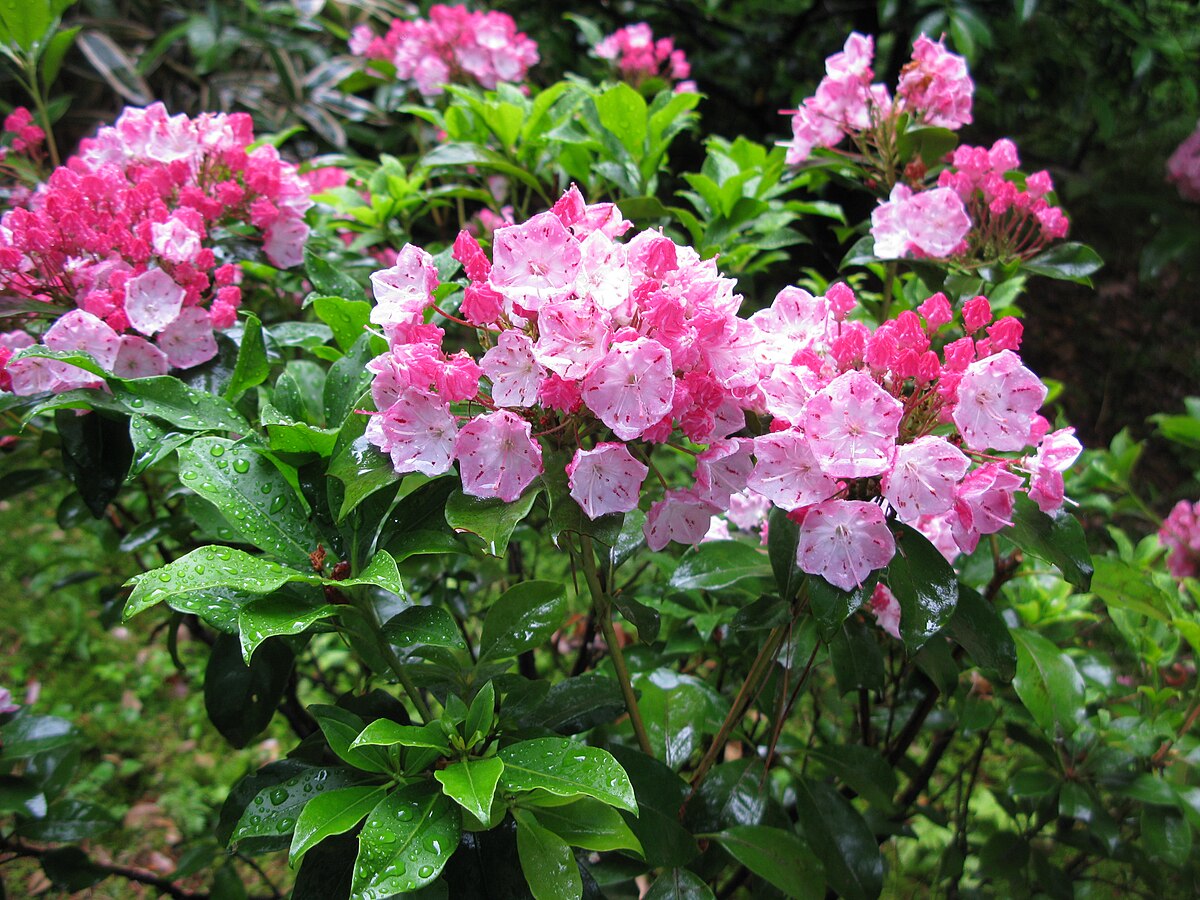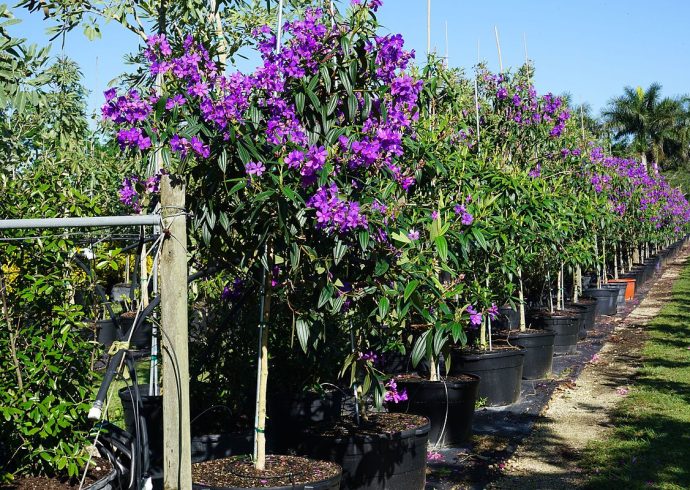
Growing a Mountain Laurel Bush
Outside of the mountain laurel (Kalmia latifolia) being the state flower of Connecticut, this bush has some of the prettiest pale pink flowers during the summer season. The little saucer-shaped flowers with the delicate pistils in the center form large, round clusters that have a delicate fragrance to them. Also known as the spoonwood, the mountain laurel grows wild in nature, favoring rocky areas or edges of the forest. It is not unusual to see one of these bushes while hiking on the trails through Connecticut or elsewhere on the east coast. Native Americans used the wood of the mountain laurel to make spoons out of for use in eating. Animals that wreck destruction in gardens, such as deer and sheep, will avoid this plant due to its toxic properties. Even though the plant is not meant for ingestion by animals or humans, it can still be appreciated in summer gardens, and vases, as this also makes a great cut flower.
The mountain laurel is best purchased from a local nursery. While it may be tempting to find one in a remote forest and dig up for replanting, it should be kept in mind that this plant, as a wildflower, is an endangered species in a number of states, including Maine, New York, and Connecticut. Also, the mountain laurel will frequently be found in protected habitat areas, which prohibits the harming of any flora or fauna in the designated area.
The best time to plant a mountain laurel is in spring after the last frost. Once you purchase a mountain laurel bush, pick out where you want to plant it. If you purchase more than one bush, plant them four to six feet apart to allow enough room for them to spread out as they grow.
Mountain laurel will grow well in partial shade, so don’t worry if there are no full, sunny spots to plant your bush. Add some mulch to the soil before planting the mountain laurel bush in well-drained, acidic soil. Pack the soil firmly around the base of the bush. Water the plant after planting it. The mountain laurel can tolerate droughts and will grow well enough for one season on rain alone, but you can still water it once every two weeks if you receive regular rainfall, and once a week, with little rainfall. Deadhead any dried flowers so that more will blossom. It is not necessary to prune the mountain laurel in its mature stage. The mountain laurel will maintain their green leaves throughout the entire year. During the winter, the elongated, shiny leaves look quite beautiful against the snow covered ground.
Image Credit: Qwert1234, CC BY-SA 3.0, via Wikimedia Commons.


